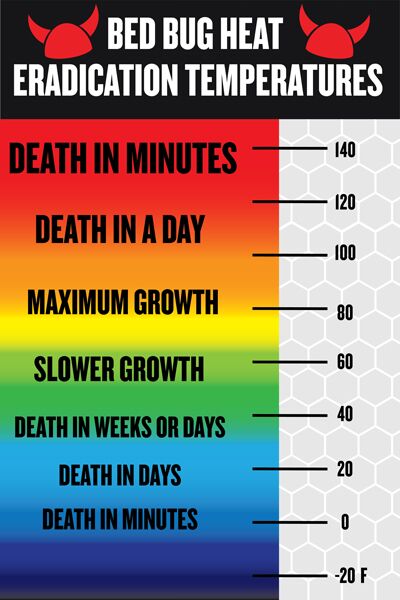Get This Report on Bed Bug Services
The 6-Second Trick For Bed Bug Services
Table of ContentsThe Ultimate Guide To Bed Bug Services8 Simple Techniques For Bed Bug ServicesRumored Buzz on Bed Bug Services
Heat treatment is an extremely efficient solutions for eliminating bed bugs from homes, apartments, and commercial properties. Unlike pesticide applications that work only on direct contact, heat affects all hiding spots, destroying adult bed bugs, nymphs, and eggs in a single session. Knowing how heat treatment functions ensures homeowners, property managers, and business owners make informed decisions.The principle of heat treatment is simple yet powerful. Bed bugs die when sustained heat is applied. Studies show that heat above 122 degrees Fahrenheit are lethal to bed bugs. For thorough eradication, professionals usually raise the temperature higher so that hidden spots reach lethal levels. Maintaining sustained heat guarantees that every hiding place is affected.

Some Of Bed Bug Services
When technicians begin the treatment, they use specialized heat equipment along with air movers to ensure even heat distribution. Rather than immediately blasting heat, the heat is gradually increased, which prevents damage and ensures bugs cannot hide.

After the treatment, heaters are turned off and the area is allowed to cool gradually. Many companies perform post-treatment inspections and provide documentation showing that the process her latest blog was thorough and successful. This documentation verifies effectiveness and proves the infestation was treated.
Heat treatment offers several advantages over chemical treatments. It is chemical-free, which is safer for children, pets, and sensitive individuals. It is often a one-day solution, allowing residents to return home quickly - Bed Bug Services. Heat also eliminates bugs even in unseen spaces. Unlike some methods, it kills all stages of bed bugs at once, ensuring comprehensive control
What Does Bed Bug Services Mean?
While highly effective, heat treatment has some limitations. It can be expensive for large properties, particularly in large spaces. Reinfestation is possible if bed bugs are reintroduced, so preventive measures are crucial. Certain items require removal or protection, and in multi-unit housing, supplementary treatments can be recommended.
Many professionals use a multi-layered approach to catch any stragglers. Intercepting traps, passive monitors, and selective official source residual sprays can provide additional protection.
After treatment, ongoing vigilance matters. Regular inspections of mattresses, upholstery, and closets help catch early signs of activity. Mattress and box spring encasements add protection, while reducing clutter can minimize future infestations. Being cautious with secondhand furniture or travel luggage is also important to prevent bed bugs from returning.
Heat treatment remains the gold standard for challenging bed bug problems. It provides a fast, eco-friendly, and thorough solution that eliminates bed bugs in a single session. When managed carefully, it ensures complete eradication without the lingering effects of chemicals, allowing residents or business owners to return to normal life.